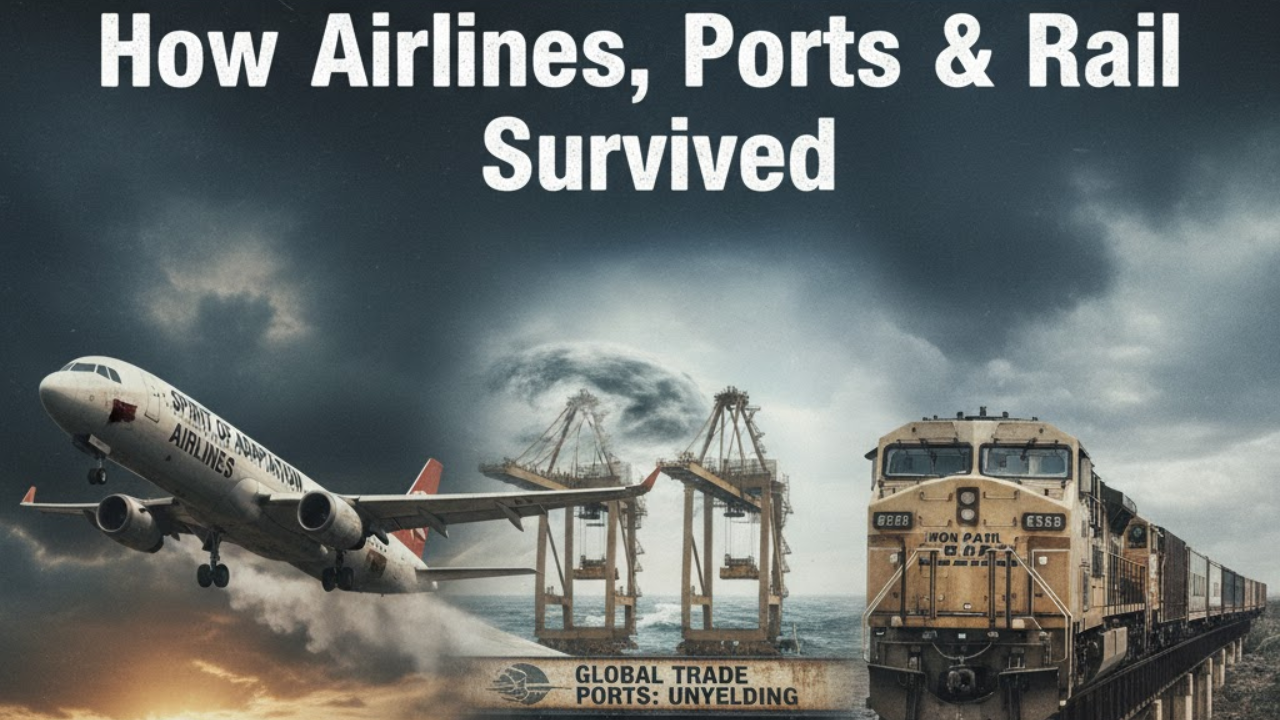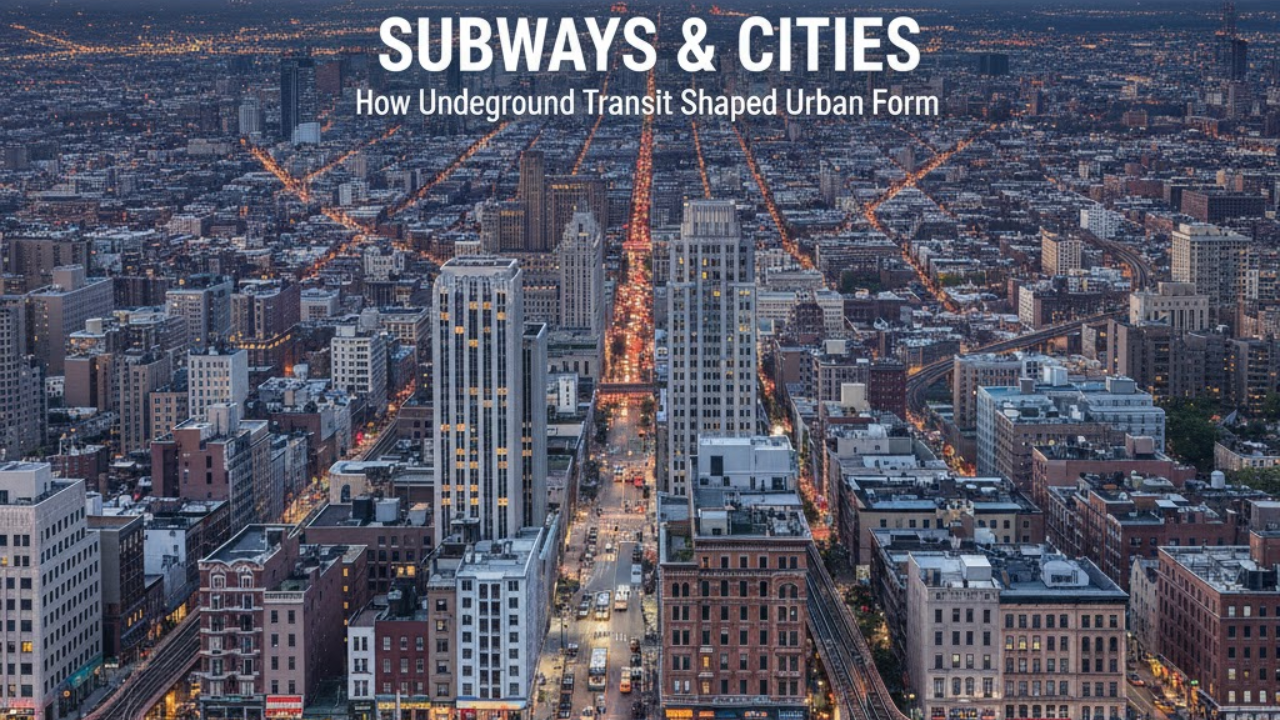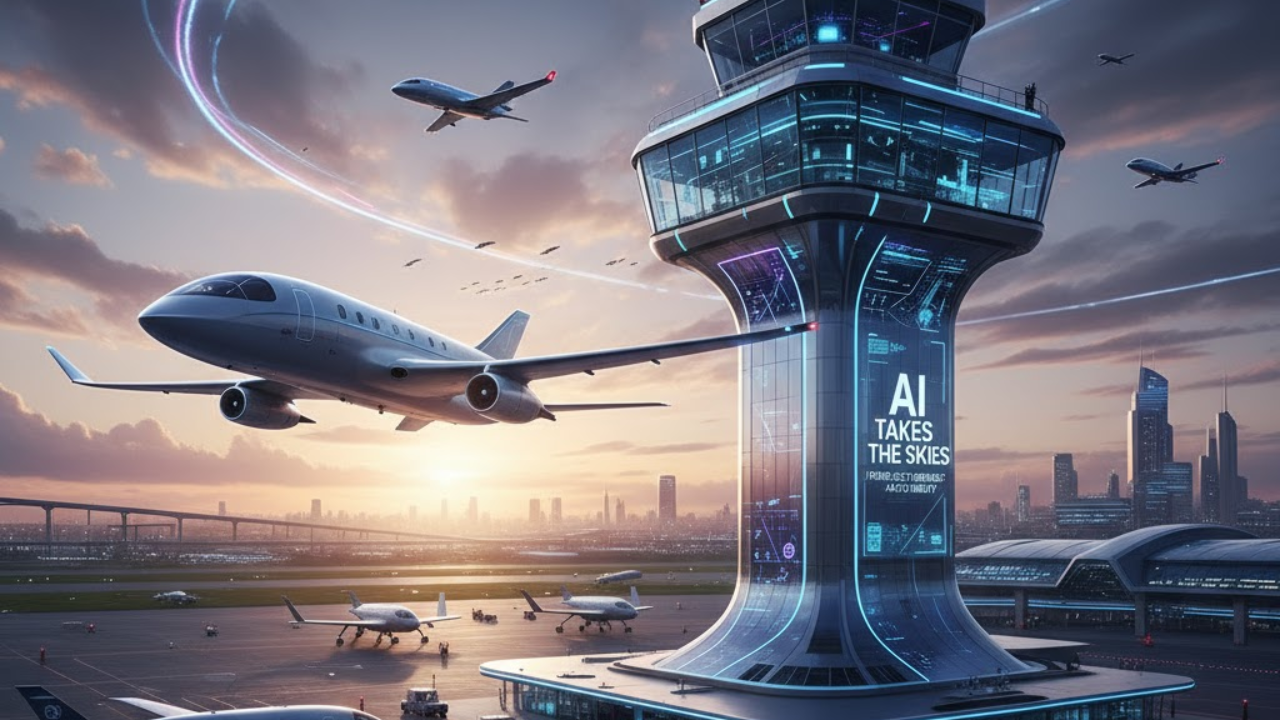
Post by : Meena Rani
When the world shook with crisis — be it a pandemic, economic collapse, or supply chain shock — a few sectors that many take for granted quietly buckled down, adapted, and came out stronger. Airlines grounded fleets, ports stared down container logjams, and rail networks rerouted through damage zones. Their stories of resilience are not widely told — but they carry lessons for every industry today.
In the face of the COVID-19 collapse, airlines confronted near-total demand evaporation overnight. Some of the most resilient carriers leaned into low-cost strategies, slashing nonessential routes and focusing on core, high-yield corridors. Others preserved cash via government aid, restructuring debt, or diverting resources to cargo. In Europe, airlines like Ryanair and Lufthansa deployed cost optimization and differentiation — one by efficiency, the other by premium value — to stay afloat. (From comparative case studies of airline responses to shock)
Some operators also brought forward innovations: contactless check-ins, health protocols, dynamic pricing, and cargo conversions. Over months, their route networks restructured; underperforming segments were cut, hubs consolidated, and capacity matched to demand patterns. Data analysis later showed that while many carriers restored flight counts, the shape of their networks changed — feeder routes closed, smaller airports dropped, new alliances formed. (In U.S. airline network recovery analysis)
The 2024 Delta tech outage offers another caution: when IT systems collapsed, over 7,000 flights were canceled, leaving millions stranded. The disruption revealed that even post-pandemic recovery strategies must be backed by robust digital redundancy and backup protocols.
Ports — the choke points of global trade — faced surges of container demand, labor shortages, and vessel pileups during global shutdowns. The disruptions during the pandemic exposed brittle links in port chains. But many ports responded by adapting infrastructure, digitalizing operations, and building redundancy.
Some ports developed resilience frameworks combining economy, strategy, and infrastructure dimensions: modular terminals, flexible storage, climate adaptation zones, stakeholder coordination, and ecological buffers. (From port resilience frameworks) Ports also diversified supply chains, expanded inland connections, and installed automation to reduce dependency on human labor. In doing so, they softened the impact of future storms, cyberattacks, or climate stress.
Ports that treated resilience not as emergency planning but as ongoing design fared much better in subsequent disruptions — able to reroute, triage, and absorb shocks without full collapse.
Rail infrastructure may seem slow compared to aviation or shipping — but its durability has shown in crisis. In India, the rail network’s design has been analyzed through network science models, showing how strategic restoration of central nodes and connectivity can accelerate recovery after natural disasters.
In global supply disruptions, railroads offered alternate corridors when ports were congested or routes blocked. Their ability to shift load between lines, prioritize high-value freight, and repair segments rapidly proved vital. The resilience of rail lies in redundancy, grid connectivity, and capacity to restore critical nodes first.
Across airlines, ports, and rail, several themes emerge:
Flexibility over rigidity: Systems built with modularity, rerouting capacity, and fallback options adapt faster.
Data-driven decision making: Real-time analytics, predictive models, and digital twins help managers triage resources under stress.
Redundancy and diversity: Having spare capacity, alternate suppliers, and multiple routes lessens system fragility.
Stakeholder ecosystems: Coordination between governments, operators, regulators, and communities strengthens response.
Upfront investment in resilience: Infrastructure designed for resilience — not patched post-disaster — pays dividends in any crisis.
Infrastructure planning that embeds resilience (climate, cyber, supply shock) as default
Digital infrastructure as backbone — the failure of systems like Delta shows digital fragility can cascade
Cross-modal coordination — e.g. ports, rail, road working in tandem to reroute throughput
Investment in “slow but steady” networks (rail) as reliable fallback when faster modes fail
Policies and funding that support long-term resilience, not just disaster relief
This article draws on industry reports, academic studies, and public information current to 2025. It is for informational and analytical purposes only, not legal, financial, or strategic advice. Readers should examine original case studies and field data when making decisions.
resilience, airlines, ports, railroads, crisis response, infrastructure, supply chain, network recovery, adaptation strategies, logistics resilience










Bengaluru-Mumbai Superfast Train Approved After 30-Year Wait
Railways approves new superfast train connecting Bengaluru and Mumbai, ending a 30-year demand, easi

Canada Post Workers Strike Halts Nationwide Mail and Parcel Services
Canada Post halts operations as CUPW strike disrupts mail and parcel delivery nationwide amid disput

PM Modi Launches BSNL ‘Swadeshi’ 4G Network, 97,500 Towers Built
India enters global telecom league as PM Modi inaugurates BSNL’s indigenous 4G, connecting 26,700 vi

India’s Iconic MiG‑21 Takes Final Flight After Six Decades of Service
After 60 years India retires its MiG‑21 fighter jet, a legendary yet controversial warplane marking

Hindustan Zinc unveils AI hotspot monitoring at Debari smelter
Hindustan Zinc launches AI-powered Switchyard Hotspot Monitoring at Debari smelter to cut outages bo

Chinese experts worked inside sanctioned Russian drone plant
Chinese drone specialists visited IEMZ Kupol supplying parts and drones via intermediaries, deepenin